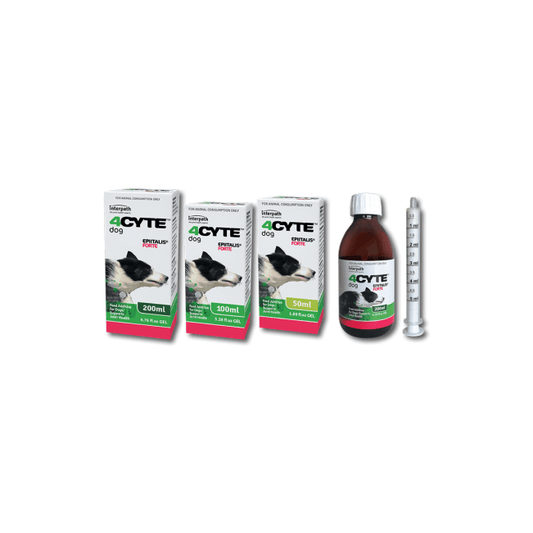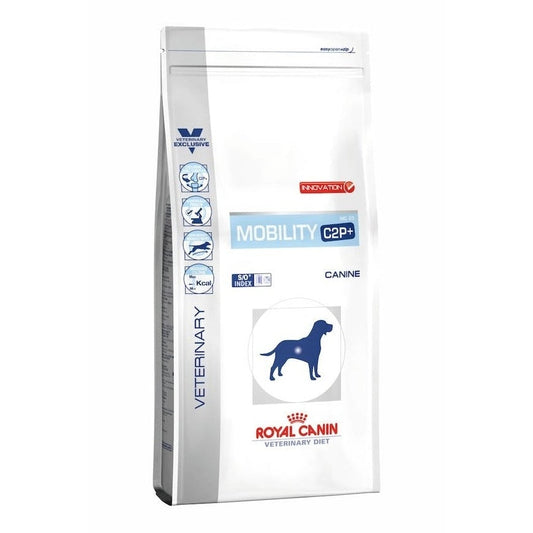

Canine Arthritis
Discover Science-Backed Solutions for Canine Arthritis Relief.
Canine Arthritis
Discover How Arthritis Can Affect Your Beloved Pet

What is Arthritis?
Osteoarthritis (OA) is a complex condition involving inflammation and degeneration of one or more joints. Dogs with OA experience pain and inflammation in various joints that interfere with the activities of daily living. OA is diagnosed through a thorough physical examination, palpation (feeling with the fingers to localize pain and determine its intensity), and additional diagnostics, including radiographs (X-rays) or other imaging technology.
What does arthritis look like for my pet?
Dogs can exhibit many different signs when they have OA, and they do not necessarily demonstrate all the same signs all the time. The most common signs dog owners may notice include:
- Difficulty getting up and down
- Walking stiffly
- Lameness in one or more legs
- Reluctance to go up and down steps
- Reluctance to jump up or down (onto/off furniture or into/out of a vehicle)
- Reluctance to be touched on some parts of the body
- Loss of stamina or being slower on walks or cutting them short
- Unexpected aggression toward other dogs or humans
How can i treat my pet?
Unfortunately, there is no “magic bullet” for treating OA. Once OA is established, we are not so much treating it as managing it because OA is not a disease that can be cured. OA is a very complex disease process, so managing it is complex because we get the best results from combining multiple modalities. Typical multimodal management of arthritis generally includes the following:
Nutrition
Normalizing body condition is critical, so your veterinarian may prescribe a specific diet to accomplish this goal. There is now a nutrient profile that can support the joints while helping to normalize body weight and condition. It is important to stick strictly to the prescribed nutritional program.
Pain medications
Non-steroidal anti-inflammatory drugs (NSAIDs) are generally used as the first line of defense against the pain of OA. Common drugs in this category are meloxicam (Metacam® and other trade names), carprofen, deracoxib (Deramaxx®), grapiprant, robenacoxib (Onsior®), and firocoxib. Your veterinarian will determine if your dog is a good candidate for this class of medication.
Rarely, a corticosteroid anti-inflammatory drug will be prescribed instead of an NSAID. The two classes of medication CAN NOT be used together.
Gabapentin is a pain medication that addresses chronic pain differently from NSAIDs or corticosteroids and complements those medications. It provides a way to address the chronic nature of OA pain and is especially helpful when the patient is older and unable to take an NSAID.
Other less commonly used drugs include tramadol, amantadine, and acetaminophen, but they are less effective unless paired with other drugs mentioned above. Never reach into your own medicine cabinet when your dog limps or has been diagnosed with OA.
Nutraceuticals
A nutritional supplement with medicinal effects is called a “nutraceutical.” There are many of these products on the market, many labeled for use with joint disease. Some commonly used products include glucosamine, chondroitin, omega-3 fatty acids, and polysulfated glycosaminoglycans. Ask your veterinarian about the scientific data supporting the prescribed nutraceuticals.
Physical medicine
Medical acupuncture can provide excellent pain relief for many dogs with OA. Likewise, other physical medicine disciplines like chiropractic and medical massage may be helpful.
Physical rehabilitation is a discipline that translates physical therapy techniques from human medicine for application to animal patients. These techniques include (but are not limited to) therapeutic laser, therapeutic exercise, joint mobilization, and hydrotherapy using an underwater treadmill. Your veterinarian can refer you to a rehabilitation specialist.
What does weight control mean for arthritis?
Research has clearly demonstrated that body fat (adipose tissue) secretes inflammatory and pro-inflammatory hormones that contribute to chronic inflammation and painful joints. You have a critical role to play in helping your dog achieve a more appropriate weight and reduce the risk of osteoarthritis and associated pain that diminishes quality of life.
Explore Our Canine Arthritis Range Supplements
Discover a comprehensive range of canine arthritis management products. Expertly formulated to support joint health in your furry friend. Our products are carefully crafted to address the specific needs of dogs suffering from arthritis, providing effective joint support.
-
4CYTE DOG EPIITALIS GEL
Regular price From $36.30 AUDRegular price -
HILL'S PRESCRIPTION DIET K9 METABOLIC + MOBILITY
Regular price From $133.30 AUDRegular price -
ROYAL CANIN K9 MOBILITY C2P+
Regular price From $59.40 AUDRegular price -
HILL'S PRESCRIPTION DIET FELINE K/D & MOBILITY 2.88KG
Regular price $112.00 AUDRegular price

What impact does your pet's weight have on arthritis?
Approximately 40% of dogs up to four years of age have evidence on X-rays of osteoarthritis (degenerative joint disease) in one or more joints. However, many dogs don’t show clinical signs of pain until they are older. With our pets living longer, it is ever more likely that dog owners will need to manage osteoarthritis for their dog at some point.
Research has clearly demonstrated that body fat (adipose tissue) secretes inflammatory and pro-inflammatory hormones that contribute to chronic inflammation and painful joints. You have a critical role to play in helping your dog achieve a more appropriate weight and reduce the risk of osteoarthritis and associated pain that diminishes quality of life.
Hills Pet Nutrition
HILL'S PRESCRIPTION DIET K9 METABOLIC + MOBILITY
Share






 is here! Shop now, pay later in 4 easy installments
is here! Shop now, pay later in 4 easy installments




